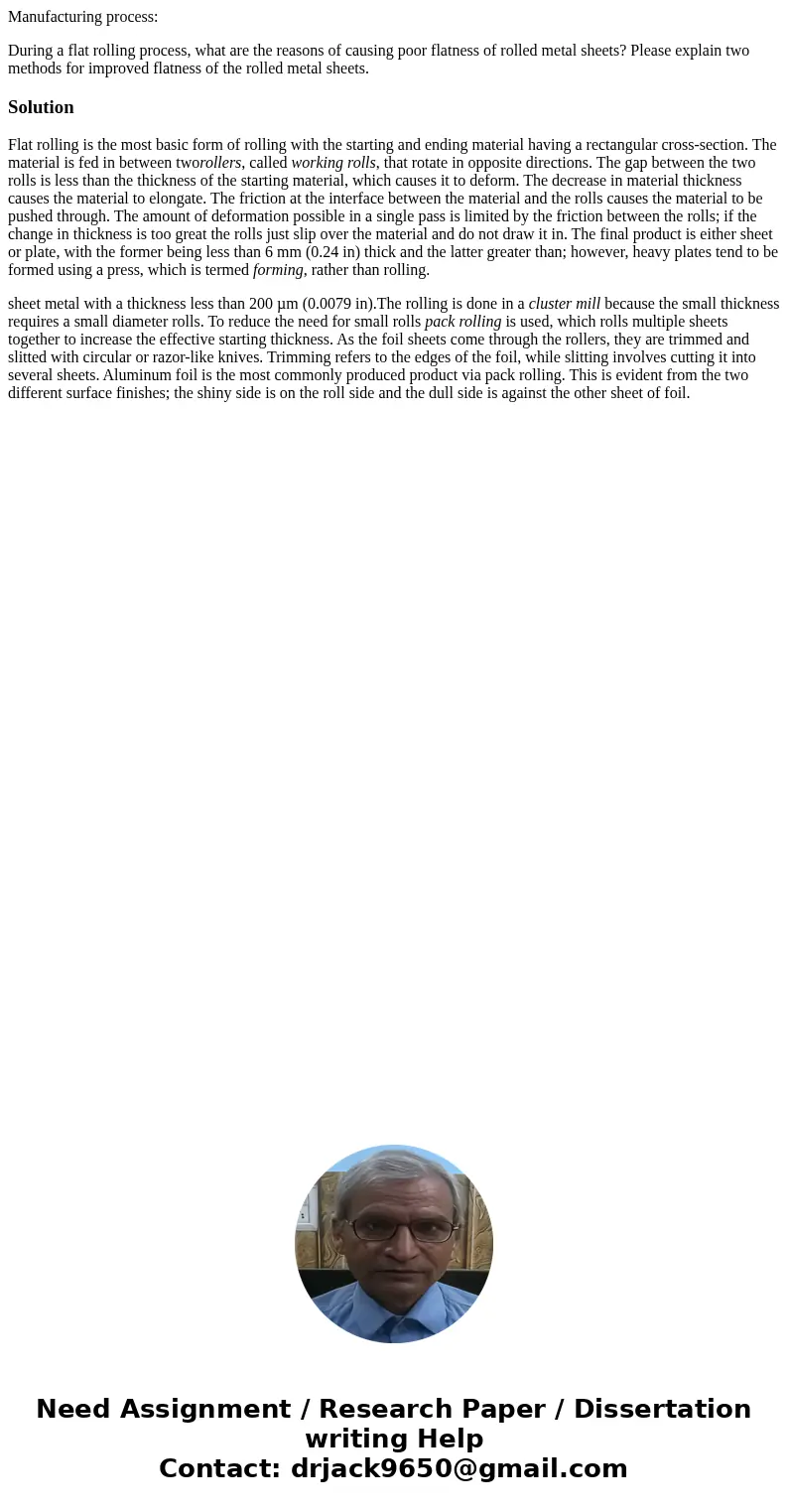Manufacturing process During a flat rolling process what are
Manufacturing process:
During a flat rolling process, what are the reasons of causing poor flatness of rolled metal sheets? Please explain two methods for improved flatness of the rolled metal sheets.
Solution
Flat rolling is the most basic form of rolling with the starting and ending material having a rectangular cross-section. The material is fed in between tworollers, called working rolls, that rotate in opposite directions. The gap between the two rolls is less than the thickness of the starting material, which causes it to deform. The decrease in material thickness causes the material to elongate. The friction at the interface between the material and the rolls causes the material to be pushed through. The amount of deformation possible in a single pass is limited by the friction between the rolls; if the change in thickness is too great the rolls just slip over the material and do not draw it in. The final product is either sheet or plate, with the former being less than 6 mm (0.24 in) thick and the latter greater than; however, heavy plates tend to be formed using a press, which is termed forming, rather than rolling.
sheet metal with a thickness less than 200 µm (0.0079 in).The rolling is done in a cluster mill because the small thickness requires a small diameter rolls. To reduce the need for small rolls pack rolling is used, which rolls multiple sheets together to increase the effective starting thickness. As the foil sheets come through the rollers, they are trimmed and slitted with circular or razor-like knives. Trimming refers to the edges of the foil, while slitting involves cutting it into several sheets. Aluminum foil is the most commonly produced product via pack rolling. This is evident from the two different surface finishes; the shiny side is on the roll side and the dull side is against the other sheet of foil.

 Homework Sourse
Homework Sourse